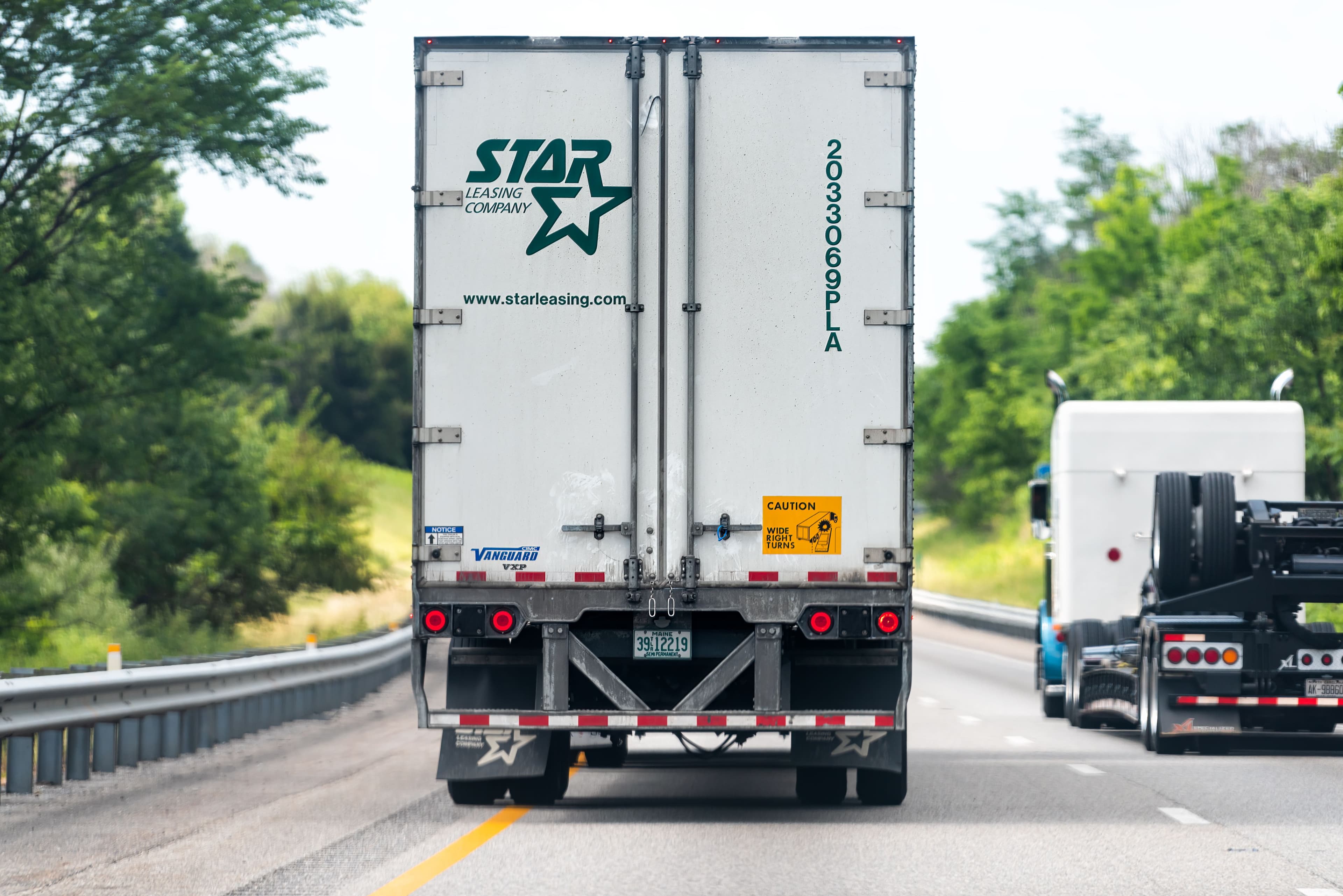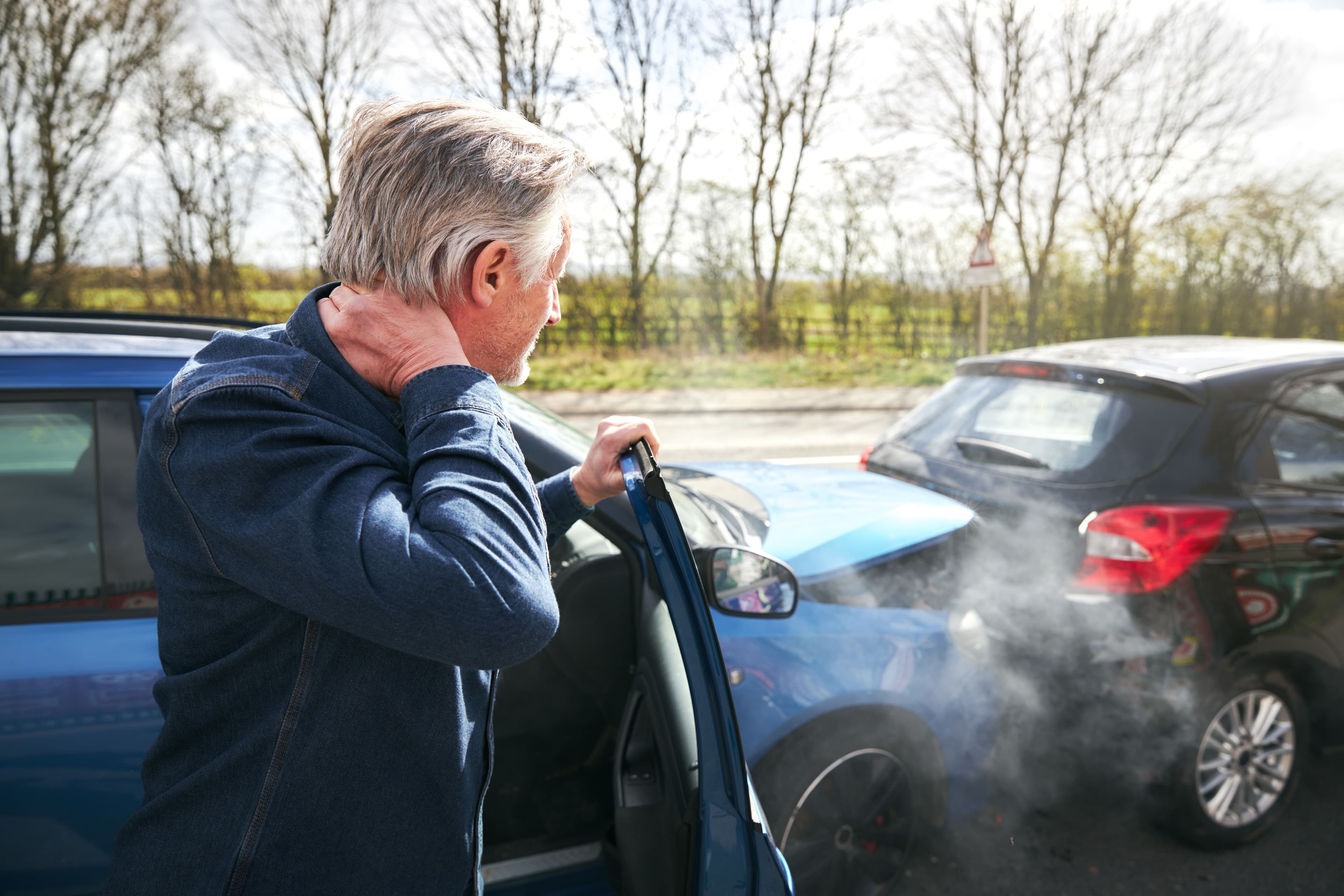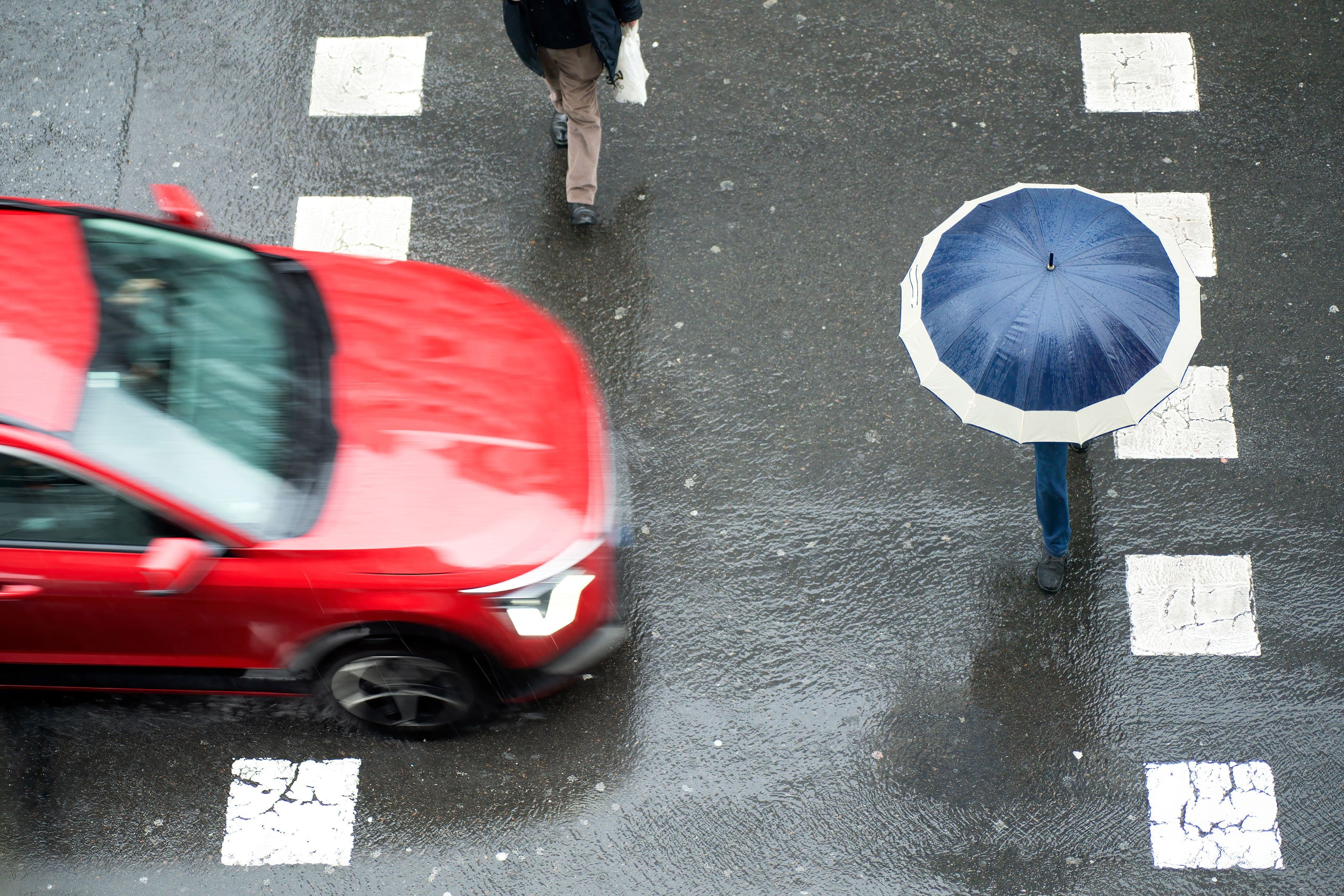In Pennsylvania, wide turn truck accidents happen when a large commercial truck swings out into another lane to make a turn, creating a dangerous gap that traps other vehicles. This occurs because trucks need extra space to turn without their long trailers hitting curbs, poles, or other obstacles.
Truck drivers receive extensive training on safe turning procedures, but when they fail to follow proper safety procedures by cutting corners, failing to signal properly, or leave excessive gaps that invite passing attempts, serious injuries and fatalities often result.
“Off Tracking” and The Dangers of Wide Truck Turns
The main danger comes from something called “off-tracking.” This means the rear wheels of the truck’s trailer follow a much tighter path than the front wheels of the cab. To prevent the trailer from running over sidewalks or hitting objects, the truck driver must swing the entire vehicle wide before completing the turn.
These accidents often happen when you see what looks like an open lane next to a turning truck and try to pass. The truck driver may not see you in their blind spot, and when the trailer swings back to complete the turn, it can crush your vehicle against the curb or another obstacle.
The most common scenarios include:
- Right turn squeeze play: The truck swings left before turning right, creating a gap that tempts you to pass on the right side
- Blind spot collision: You enter the truck’s “no-zone” during the turn, making you invisible to the driver
- Pedestrian or cyclist strike: The swinging trailer hits someone crossing the street or riding in a bike lane.
How Negligence Leads to Wide Turn Accidents
Commercial trucks—especially tractor-trailers—are far longer than passenger vehicles, so tight turns are harder to execute. Pennsylvania Commercial Driver’s License (CDL) standards require specific turning procedures.
When drivers follow those rules, wide turns are both lawful and often necessary. However, when they cut corners or ignore safety protocols, they become liable for any accidents they cause.
The key difference between safe and negligent wide turns comes down to execution:
Safe Wide Turn
Negligent Wide Turn
Signals at least 100 feet before turning
Late signaling or no signal at all
Keeps trailer close to the right curb
Leaves excessive gap inviting vehicles to pass
Checks mirrors repeatedly during turn
Fails to monitor blind spots
Maintains slow turning speed
Turns too fast for conditions
Blocks right lane to prevent passing
Creates dangerous passing opportunity
A safe turn means setting up so no one thinks it’s okay to slip by. If a trucker leaves a big gap or doesn’t signal, that turn can quickly turn into a crash.
Who Is Liable in a Wide Turn Crash in Pennsylvania
Wide-turn crashes often stem from multiple failures, so liability may be shared. Our job is to identify every responsible party and tie their conduct to your injuries.
The truck driver is primarily at fault when they ignore turning rules—failing to signal early, neglecting blind-spot checks, taking the turn too fast, or positioning the rig in a way that invites passing.
To build a strong case, we pull the driver’s qualification file, past violations, and ELD logs to see if turning rules and federal safety standards were followed.
If training was missing—or the carrier was hired or supervised poorly—our experienced West Chester truck accident attorneys put the company on the hook. We also check for schedule pressure and hours-of-service problems that may have pushed the driver to make bad choices.
Other Potentially Liable Parties
- Cargo loading companies. Improperly distributed or unsecured cargo can make a truck unstable, especially during wide turns, leading to a loss of control and collisions.
- Maintenance providers. Neglected inspections or faulty repairs in systems like brakes or steering can cause mechanical failures that make safe turning impossible.
- Government entities. Poorly designed intersections, inadequate signage, or unsafe road conditions may contribute to wide-turn crashes. These claims are possible but come with strict notice and procedural requirements.
The trucking company’s insurance normally provides main coverage for damages, but we identify all accountable parties to ensure you obtain fair recompense for your injuries.
Common Causes and How Fault Is Proven
Wide-turn cases turn on fast action because key evidence disappears quickly. Modern rigs store electronic data (speed, braking, steering, and turn-signal status) on the EDR/ECM, and dashcams and telematics often fill in the gaps.
That data isn’t kept forever, so we immediately send a preservation (litigation-hold) letter to stop routine deletion and secure what we need.
Right Turn Squeeze Play
When a truck drifts wide and leaves a tempting gap near the curb, drivers or riders may enter the danger zone and get trapped as the trailer swings. We prove negligence by showing violations of turning protocol, diagram the trailer’s path, and use reconstruction experts to map how the turn created the hazard.
Improper Signaling and Lane Position
Truck drivers must signal in advance and maintain a lane position that doesn’t invite a pass on the right. We verify both through traffic and dash-cam video, signal-phase timing, path mapping, and witness statements.
If the turn signal came late or the setup left a curbside gap, those facts support a finding of negligent turn execution.
Blind Spots and Off-Tracking
Blind spots and trailer off-tracking are known risks. Training requires mirror checks, camera use (if installed), and a turn setup that keeps others out of the swing.
Video, EDR data, and scene marks let us reconstruct the path and show whether those steps were followed. If they weren’t, liability can be proved.
Driver Fatigue or Distraction
Federal hours-of-service rules limit how long truckers can drive without mandatory rest breaks. We examine driver logs, electronic logging device data, and cell phone records to determine if fatigue or distraction played a role.
Tired drivers often misjudge the timing and spacing needed for safe turns.
Improper Training or CDL Violations
It’s on the trucking company to make sure their drivers can handle tight city corners and crowded crosswalks. We pull what the driver was taught, how they were tested, and whether the company followed up with training.
We also verify the CDL is correct and current. When records show missing training or weak supervision, we hold the company responsible—not just the individual driver.
Road Design or Signage Issues
Certain corners just aren’t built for big rigs. If bad design or missing signs helped cause the crash, we measure the intersection, pull camera footage and old reports, and check whether the city already knew about the problem.
When they had notice and didn’t act, we may have a case—but the filing rules are strict and time-sensitive.
Improperly Loaded Cargo
Unstable or shifting cargo alters how a truck corners and can snap the trailer into a sharper arc. We trace responsibility back to the dock: bills of lading and scale tickets show weight and placement; photos and CCTV confirm securement; and company policies establish what was required.
When the records reveal poor weight distribution or inadequate tie-downs, that evidence supports a claim of negligent loading.
What To Do After a Truck Wide Turn Crash
What you do in the moments after a truck crash can shape your entire claim. Even if you’re overwhelmed, it’s better to take prompt actions. With a few focused steps you will protect your rights and lock down the evidence your case needs.
Call 911 And Move To Safety
Report the crash so there’s an official record and medical help on the way. If it’s safe, turn on your hazards and move your vehicle out of traffic; if you’re badly hurt or feel a neck/back injury, stay put and wait for EMS. Ask the officer for the report number—insurers and courts rely on it.
Document The Scene Thoroughly
Before anything moves, use your phone to record the scene. Get wide shots of the entire intersection—lane layout and the truck’s position—then close-ups of damage, skid or yaw marks, debris, and fluid trails.
Photograph signals and signs, lane markings, and anything that blocks visibility. Capture the truck’s plate, trailer ID, company name, and any hazmat placards. Check nearby businesses for security cameras and ask them to save the footage.
See A Doctor The Same Day
Seek medical attention immediately, even if you don’t see any injuries. Adrenaline and shock can mask symptoms of significant injuries like internal bleeding, concussions, or soft tissue damage. Delaying medical care gives insurance companies ammunition to argue that your injuries weren’t serious or weren’t caused by the accident.
Emergency room visits create important medical records that document your injuries and link them directly to the crash. This documentation becomes crucial evidence in your compensation claim.
Protect Your Claim From Insurers
Expect a call from the trucking company’s insurer soon after the crash. Be polite, but don’t give a recorded statement or sign anything until you’ve talked to a lawyer. Adjusters are paid to limit payouts, and even honest answers can be used out of context later.
Be extra careful with “quick cash” offers—those often come before doctors know the full picture. Serious injuries usually need ongoing care that early settlements don’t cover.
Preserve Trucking Evidence Quickly
Your job is to heal—ours is to protect the evidence. When you call us, we immediately send a legal hold so the carrier can’t erase driver logs, electronic data, videos, or maintenance records. These systems cycle fast. Preserving them now can make the difference in your case later.
Call Wilk Law Personal Injury & Car Accident Lawyers For A Free Consultation
At Wilk Law Personal Injury & Car Accident Lawyers, we work on a contingency fee: you don’t pay attorney fees unless we recover money for you. From day one, our team starts investigating the crash and protecting your rights so you can focus on getting better.
Most trucking companies carry higher insurance limits than everyday drivers—often $1,000,000 or more, sometimes with extra layers. That doesn’t mean they pay easily. Insurers fight hard to cut payouts, which is why building a strong case early matters.
Consult With Our Award-Winning Truck Accident Lawyers in West Chester, Pennsylvania, Today
Trucking companies and their insurers move fast to protect themselves. You need someone just as fast on your side. At Wilk Law Personal Injury & Car Accident Lawyers, we immediately secure records, investigate the crash, and build the strongest case possible.
Your next step is simple: contact us today for a free consultation. You pay nothing unless we win. Let our award-winning truck accident lawyers fight for the compensation you and your family deserve.
Related Articles
Truck jackknife accidents in Pennsylvania
Why Pennsylvania truck accident claims are so complex
How a Pennsylvania truck accident lawyer assists with your claim




